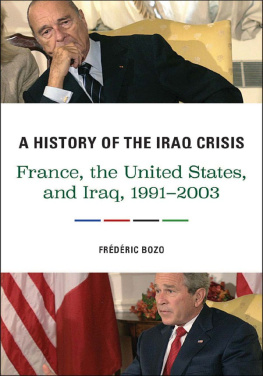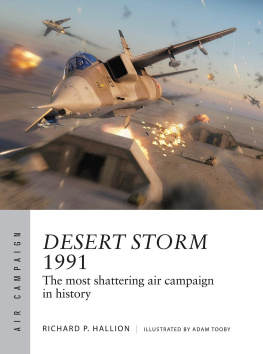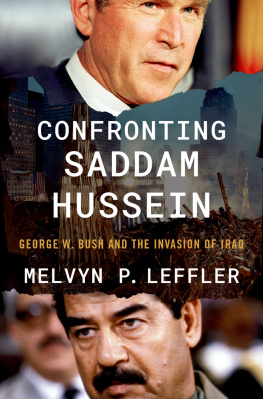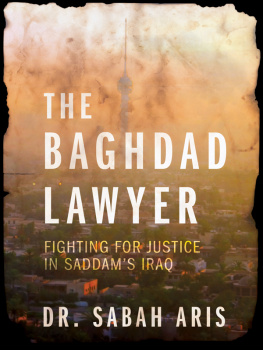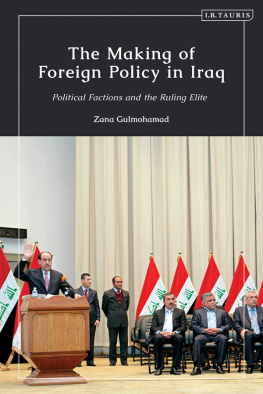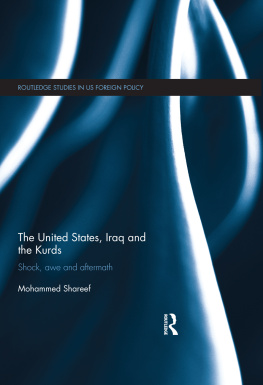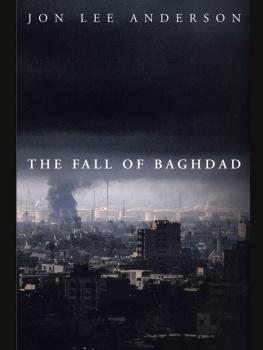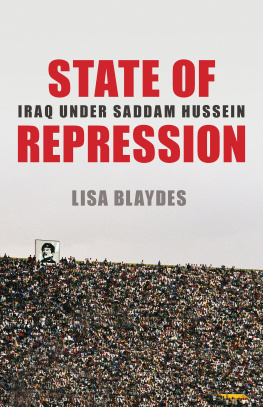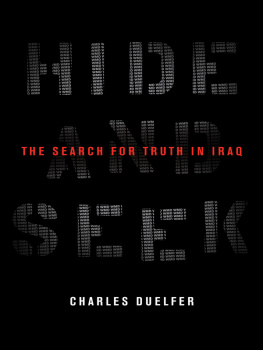Cover
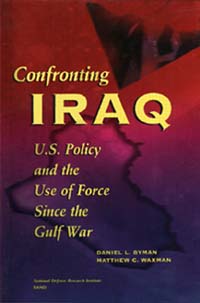
| title | : | Confronting Iraq : U.S. Policy and the Use of Force Since the Gulf War |
| author | : | Byman, Daniel.; Waxman, Matthew C. |
| publisher | : | RAND |
| isbn10 | asin | : | 0833028138 |
| print isbn13 | : | 9780833028136 |
| ebook isbn13 | : | 9780585383521 |
| language | : | English |
| subject | United States--Foreign relations--Iraq, Iraq--Foreign relations--United States, United States--Foreign relations--1989- , United States--Military policy. |
| publication date | : | 2000 |
| lcc | : | E183.8.I57B9 2000eb |
| ddc | : | 327.730567 |
| subject | : | United States--Foreign relations--Iraq, Iraq--Foreign relations--United States, United States--Foreign relations--1989- , United States--Military policy. |
Page a
The research described in this report was sponsored by the Office of the Secretary of Defense (OSD). The research was conducted in RANDs National Defense Research Institute, a federally funded research and development center supported by the OSD, the Joint Staff, the unified commands, and the defense agencies under Contract DASW01-95-C-0059.
Library of Congress Cataloging-in-Publication Data
Byman, Daniel. 1967
Confronting Iraq: U.S. policy and the use of force since the Gulf War / Daniel L. Byman and Matthew C. Waxman.
p. cm.
MR-1146-OSD.
Includes bibliographical references.
ISBN 0-8330-2813-8
1. United StatesForeign relationsIraq. 2. IraqForeign relationsUnited States. 3. United StatesForeign relationsl989 4. United StatesMilitary policy. I. Waxman, Matthew C., 1972 II. Title.
| E183.8I57 B9 2000 |
| 327.730567dc21 | 00-020586 |
RAND is a nonprofit institution that helps improve policy and decisionmaking through research and analysis. RAND is a registered trademark. RANDs publications do not necessarily reflect the opinions or policies of its research sponsors.
Copyright 2000 RAND
All rights reserved. No part of this book may be reproduced in any form by any electronic or mechanical means (including photocopying, recording, or information storage and retrieval) without permission in writing from RAND.
Published 2000 by RAND
1700 Main Street, P.O. Box 2138, Santa Monica, CA 90407-2138
1200 South Hayes Street, Arlington, VA 22202-5050
RAND URL: http://www.rand.org/
To order RAND documents or to obtain additional information,
contact Distribution Services: Telephone: (310) 451-7002;
Fax: (310) 451-6915; Internet: order@rand.org
Page i
Confronting
IRAQ
U.S. Policy
and the
Use of Force
Since the
Gulf War
DANIEL L. BYMAN
MATTHEW C. WAXMAN
Prepared for the
Office of the Secretary of Defense

Approved for public release; distribution unlimited
Page ii
This page intentionally left blank
Page iii
PREFACE
Although Saddam Husayns Iraq has regularly defied U.S. pressure, a close look at recent history reveals that Baghdad has also often retreated in the face of U.S. threats or limited military strikes. This mixed record illustrates many of the challenges that commonly arise when confronting major regional adversaries. This report seeks to derive lessons for future confrontations with Baghdad and for coercive diplomacy in general. It examines the nature of Iraq as an adversary, U.S. objectives in the Persian Gulf region, and the historical record of recent attempts to coerce Iraq. It then assesses Iraqs vulnerabilities and concludes by drawing broader implications for successful coercion.
This assessment is intended to inform both policymakers and individuals concerned with the use of force in general and with Persian Gulf security in particular. Policymakers can draw on this assessment in judging how to better coerce Iraq and how to coerce other adversaries elsewhere in the world.
This research was conducted for the Office of the Assistant Secretary of Defense for Strategy and Threat Reduction within the International Security and Defense Policy Center of BANDs National Defense Research Institute, a federally funded research and development center sponsored by the Office of the Secretary of Defense, the Joint Staff, the unified commands, and the defense agencies.
Page iv
This page intentionally left blank
Page v
CONTENTS
Preface | iii |
Figures | ix |
Summary | xi |
Acknowledgments | xxi |
Abbreviations | xxiii |
Chapter One |
INTRODUCTION | |
Chapter Two |
UNDERSTANDING COERCION | |
Defining Coercion | |
Difficulties in Distinguishing Compellence from
Deterrence | |
Coercion as a Dynamic Process | |
The Uncertain Meaning of Success | |
Chapter Three |
IRAQ AS AN ADVERSARY | |
How Saddam Stays in Power | |
Security and Regime Protection Forces | |
Political Techniques | |
Iraqs Foreign Policy Goals | |
Saddams Shifting Strategy | |
Saddam as an Adversary: A Cagey Foe
or Foolish Thug? | |
Page vi
Chapter Four |
U.S. OBJECTIVES, OPTIONS, ASSUMPTIONS | |
Analytic Assumptions | |
Containing Iraqi Aggression | |
Preventing NBC Buildup | |
Toppling Saddams Regime | |
Preserving Regional Stability | |
Constraints on the United States | |
Fear of Iraqi Fragmentation | |
Discomfort with Sanctions | |
Preserving an International Alliance | |
Humanitarian Ambivalence | |
Domestic Limits to Any Concessions | |
Chapter Five |
ATTEMPTS TO COERCE IRAQ: THE HISTORICAL
RECORD | |
Establishing UNSCOM Inspections (1991) | |
Creating a Kurdish Safe Haven (19911992) | |
Establishing a Southern No-Fly Zone (August 1992
Present) | |
Responding to Inspection and No-Fly Zone Standoffs
(December 1992January 1993) |
Next page


